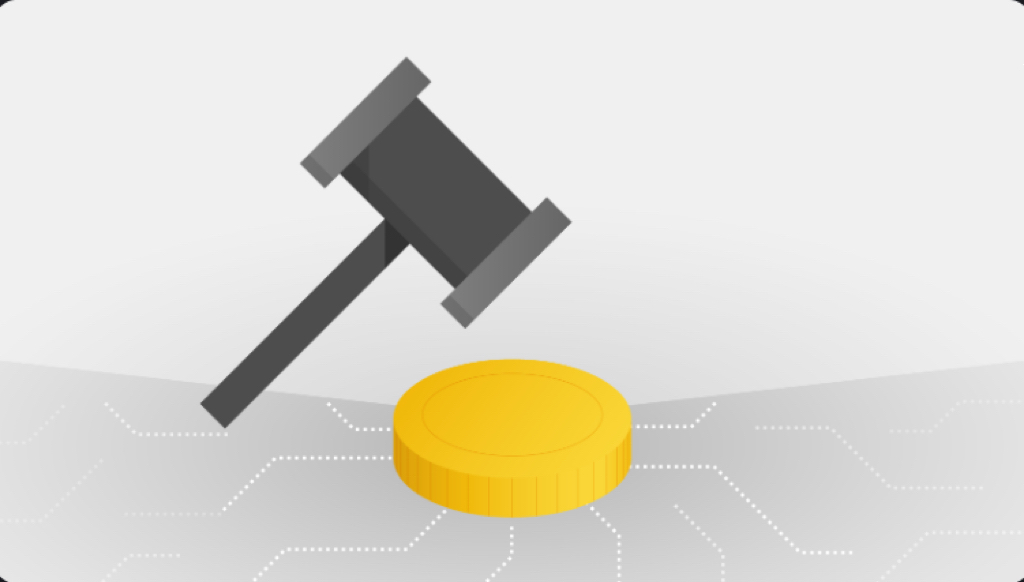
Although blockchain technology was originally designed as the network architecture for Bitcoin, it is now being used in various fields. One such field is government governance, where distributed systems play a significant role and have great potential to improve the work of the public sector.
Why Do Government Agencies Want to Adopt Blockchain Technology?
Blockchain technology offers many potential advantages for government governance. The primary reasons government agencies consider leveraging blockchain are its ability to increase decentralization, enhance data integrity and transparency, and improve efficiency while reducing operational costs.
Decentralization and Data Integrity
There are many ways to design a blockchain, but all involve some degree of decentralization. This is because blockchain networks are maintained by numerous computer nodes that synchronize to validate and confirm all data. These nodes must reach consensus and agree on the state of the database to ensure a high level of authenticity.
As a result, blockchain systems are highly immutable, and their frameworks can be customized to ensure that only authorized parties can access or modify information. In practice, various administrative bodies can act as validators, participating in the distribution and verification of data. This significantly reduces the likelihood of data tampering and fraud.
Non-governmental organizations, universities, and citizens can also serve as validation nodes, further decentralizing the system. Additionally, these validation mechanisms can prevent common errors, such as incorrect data input (e.g., data blocks lacking foundational information being rejected by distributed network nodes).
Moreover, blockchain may one day play a crucial role in election processes. Fair and transparent elections are the cornerstone of democracy, and blockchain’s immutability makes it an excellent solution for ensuring that votes cannot be tampered with. Beyond providing additional security for voting data, blockchain could also enable secure online voting. For example, West Virginia experimented with this technology during the 2018 U.S. midterm elections.
Transparency
Blockchain databases can store and protect government records, making it difficult for anyone to manipulate or hide information. Currently, most government data is stored in centralized databases controlled directly by authorities. This means the data is held by a select few, making it easy to manipulate behind the scenes. In such cases, blockchain is a better alternative because it distributes data storage and verification across multiple departments, effectively decentralizing power.
Thus, blockchain can serve as a highly transparent database, reducing (or eliminating) the need for trust between government agencies and the public. For example, some European governments are exploring the potential use of blockchain-based registries to reduce property disputes. Such distributed systems allow government agencies and citizens to access and verify data, with each party entitled to a copy of official documents and declarations.
Decentralized blockchains also provide permanent access to records, enabling law enforcement and oversight bodies to expose corruption and abuse of power. Additionally, blockchain systems can reduce or eliminate the need for intermediaries in data sharing and financial transactions, making it harder for government officials to move funds through opaque entities.
Improved Efficiency
Another major reason blockchain can be applied in government management is its ability to maximize the efficiency of national agencies and reduce operational costs. Since government operations rely on taxpayer funds, wise budget use is crucial. Blockchain systems and smart contracts can automate tasks and workflows, significantly reducing the time and costs associated with bureaucratic processes.
Lowering administrative expenses is not only practical but also helps increase public trust and satisfaction. Lower costs and greater efficiency can lead to higher approval ratings for governing bodies. Governments can also reinvest the savings from reduced operational costs into other areas (e.g., education, security, and public health).
Another application of blockchain in government governance is taxation. Thanks to distributed ledgers, fund transfers can be streamlined (as pre-configured), potentially reducing administrative costs related to tax collection, distribution, and enforcement. For example, tax agencies can enhance taxpayer security by storing records and processing returns on private blockchains, effectively protecting taxpayers from fraud or data theft.
Drawbacks and Limitations
While blockchain can effectively enhance data integrity, transparency, and efficiency, its use in the public sector still has limitations.
Interestingly, blockchain’s immutability, while an advantage in many cases, can also be a drawback. The inability to alter data makes accurate initial input critical, meaning measures must be taken to ensure the correctness of data collection.
Although some blockchain designs allow for flexibility in execution (i.e., permitting data changes), such changes require majority node consensus. Because the system is decentralized, disagreements can arise. However, this issue can be quickly resolved in private blockchains that do not require high decentralization.
Once data is stored on a blockchain, it becomes permanently available to authorized users, raising privacy concerns. This may conflict with procedures like record sealing (e.g., expunging criminal records). Some countries’ laws recognize the "right to be forgotten," and immutable records could violate existing legal or judicial precedents. Solutions like data deletion features or cryptographic techniques (e.g., zk-SNARKs or other zero-knowledge proofs) may address this issue.
Finally, it’s worth noting that governments themselves may pose obstacles to blockchain adoption. In some regions, local agencies may be unaware of blockchain’s value, leading them to overlook its benefits. In governments where corruption is widespread, resistance to blockchain may arise to protect vested interests.
Conclusion
While blockchain has some drawbacks, it offers many viable applications in government governance. From increasing transparency to streamlining taxation, distributed networks can help governments improve efficiency and foster higher levels of public trust. Some applications remain conceptual, while others are already being piloted in many countries.
Notably, digital systems were used in government governance long before blockchain (early 2000s). Estonia was a pioneer, launching its digital identity program in 2002 and becoming the first country to hold internet-based elections in 2005. In 2014, the Estonian government initiated the e-Residency program, which proposed using blockchain to manage data and enhance digital security.
















